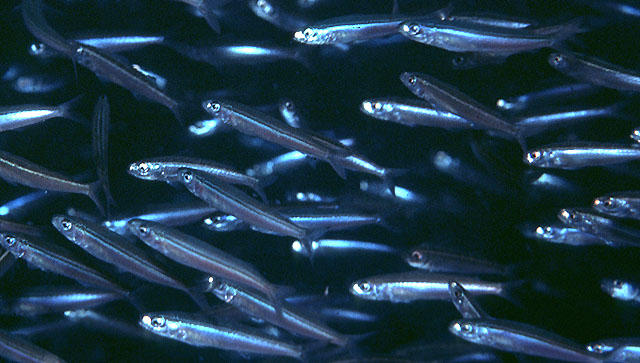| Caesionidae (Fusiliers), subfamily: Gymnocaesioninae |
| 14 cm TL (male/unsexed) |
|
reef-associated; marine; depth range 37 - 91 m |
| Indo-Pacific: East Africa, not including the Red Sea or Arabian (Persian) Gulf, to the Solomon Islands. |
|
Dorsal spines (total): 12-15; Dorsal soft rays (total): 8-11; Anal spines: 3-3; Anal soft rays: 9-11. Description: Body brownish bronze dorsally; silvery white ventrally. usually 6-9 scales on cheek; usually 29-34 predorsal scales; median fins without scales. Upper peduncular scale rows usually 11-14; lower peduncular scale rows 15-18. Dorsal fin deeply notched with the last few spines almost separate. 2 Post maxillary processes; posterior end of maxilla tapered (Ref. 402). Head length 3.3-4.0 in SL; body depth 4.4-5.7 in SL (Ref. 90102). |
| Primarily a near-shore pelagic species (Ref. 30573), but swims mainly in open water away from reefs (Ref. 48636). Forms dense aggregations (Ref. 90102). Mixed with other planktivores and is easily overlooked. Feeds on zooplankton (Ref. 30573). Oviparous, with numerous, small pelagic eggs (Ref. 402). Caught at night using lights and dip nets (Ref. 30573). Important tuna bait fish in some countries (Ref. 30573). |
|
Least Concern (LC); Date assessed: 06 March 2015 Ref. (130435)
|
| harmless |
Source and more info: www.fishbase.org. For personal, classroom, and other internal use only. Not for publication.
